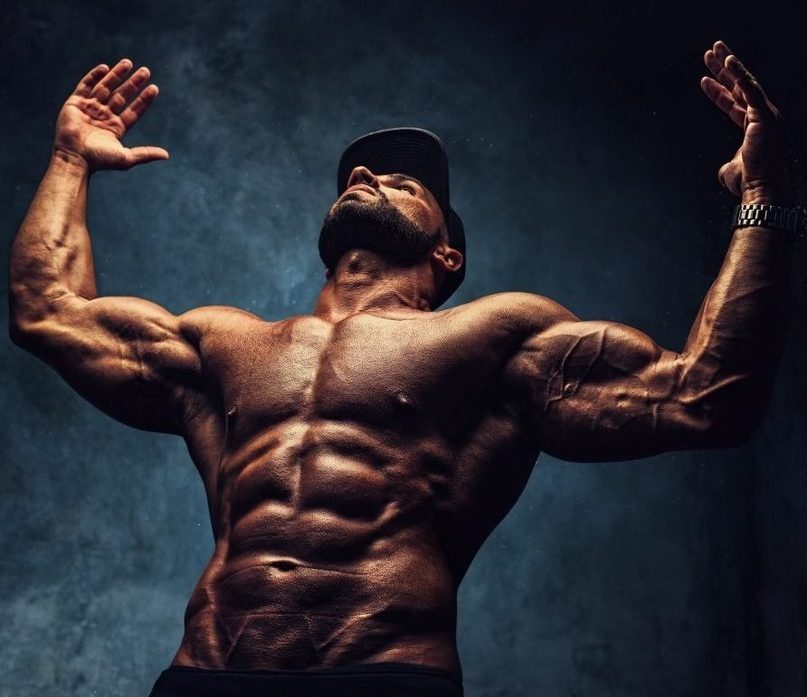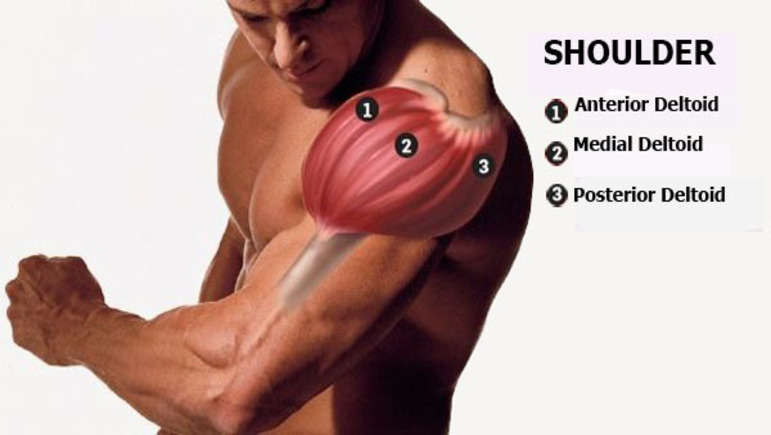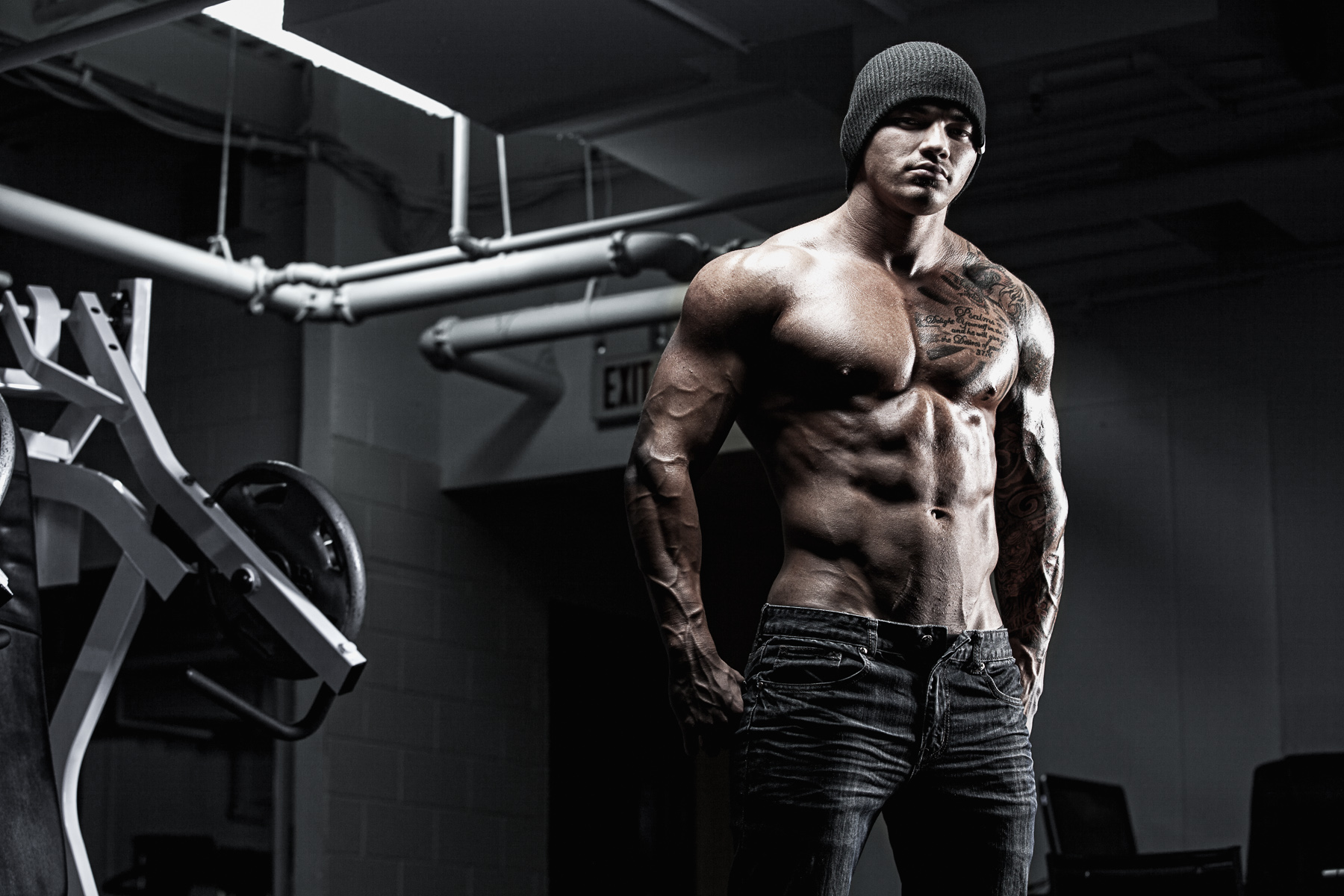
Shoulder muscles: anatomy and function
When it comes to the shoulder, it is customary for specialists to mean the upper part of the arm, which starts from the joint of the elbow, and is limited to the shoulder-shoulder joint. The muscles of the shoulder play a critical role in the implementation of the full range of movements of the upper limb.
Contents of the article: Anatomical structure What bones surround the Ligaments of the shoulder muscles
Anatomy
the corset of a person rests on a strong connection of muscles with bone structures. Therefore, to understand the correct anatomical structure of the shoulder muscles, it is necessary to know the structure of the bone skeleton of the upper limbs, ligamentous structures.Bones
The shoulder girdle is formed by the scapula, the clavile. The scapula has this name because it looks like this instrument, that is, it is flat, irregular, triangular in shape. The scapula is located at the back, its costal surface is slightly concave. On the surface of the scapula, there are many anatomical structures that are necessary for the attachment of muscle heads and ligaments. These formations are called tubercles, condyles. The most extreme, lateral edge of the scapula gradually turns into a process called the acromion. It is he who serves to determine the extreme points of the shoulder girdle by measuring anthropometric data. The coracoid process, also located on the edge of the scapula, is a necessary formation for the attachment of the shoulder muscles, ligamentary formations – ligaments, joints.The clavicle bone or just the clavicle is a long, narrow bone, resembles the shape of the Latin letter S. It has two ends in its structure – lateral, proximal, that is, located on the side and on the inner edge of the bone. The proximal end is connected to the sternum, this connection is static, motionless. The extreme end is attached by a complex formation of ligaments, the muscles of the shoulder to the acromial process of the scapula, thus forming the clavicular-scapular joint.
With the help of ligamentous formations, the clavicle is attached to the scapula, sternum , thereby creating a kind of frame so that the muscles of the shoulder can carry out the movements of the upper girdle of the limbs. The clavicular bone also has a lot of necessary roughness and tubercles for these purposes, which serve to attach muscles and ligaments.
The shoulder itself is formed at the base by only one bone – the humerus. It belongs to the structure of tubular bones, is a fairly large bone. The bony form on the cross-section at the top, in the shoulder part has outlines resembling a circle, the lower part will already be close to a triangular shape.
The upper part of the humerus is round, called the head of the humerus. It resembles a ball in structure, its convex part faces the acromial process of the scapula, is the articular surface of the shoulder joint. The head of the humerus is covered with hyaline cartilage, which provides a smooth, easy sliding of the articular formations of the shoulder relative to each other during movements of the shoulder girdle.
Further down, the brachial bone is arranged in such a way that it has all the necessary anatomical structures for attachment, passage, location of shoulder muscles, tendons, nerves of the upper limb:
- tubercles for muscle attachment;
- groove for the tendon;
- groove for the radial nerve ;
- tuberosity for the attachment of the deltoid and other shoulder muscles.
The lower part of this bone, which serves as the most important link for the formation of the elbow joint, has a triangular shape if you make a transverse cut in this place. The place that connects to the ulnar bone base is called the humerus block, and the protruding parts on the sides are the condyles for attaching muscle formations, ligament formations.

Ligaments (ligamentum)
Movements, their volume are provided not only by the muscles of the shoulder, but by the ligamentous joints. Ligaments of the shoulder, muscle fibers form the arch, roundness of the shoulder. Several elastic structures – ligaments connect the scapula to the clavicle in such a way that it becomes possible to ensure the mobility of this connection. Also, the ligamentous bundles form a strong, at the same time, elastic connection of the scapula with the brachialis. This is what makes it possible for a person to make rotational movements, flexion and extension, abduction and adduction of the upper limb precisely in the shoulder girdle. At the same time, it is the ligaments that carry out the function of limiting the range of motion in order not to violate the integrity of the anatomical structures during sudden movements, injuries, blows or falls. This is especially important for athletes who are involved in heavy kettlebell lifting.
Muscles
The shoulder muscles include muscle formations with two opposite functions: extension and flexion. Accordingly, they are all subdivided into flexors and extensors.
The first are located on the frontal surface of the humerus, represented by the following muscle formations:
- coracohumeral or acromio-brachial;
- shoulder;
- biceps, more popularly known as just biceps.
Each of these muscles is responsible for its own type of movement, and together they are flexor muscles, that is, they perform the function of bringing the hand closer to the body, flexion. The acromio-brachial muscle connects to the small head of the biceps, the chest muscle, attaches to the shoulder bone at the top, carries out the flexion movement of the shoulder and the circular movement of the shoulder girdle and arm inward. It is clear that a violation of its integrity or disease makes these movements difficult, impossible, very painful.
Actually the muscles of the shoulder or brachial muscle has a dual structure, consists of two equivalent heads. It connects the two bones of the hand. The main function of the shoulder muscles is to flex the forearm.
The biceps, or biceps, covers the brachialis muscle from above. It consists of two heads, which are attached to the supra-articular tubercle of the scapula and to the acromion at the top and to the radius and fascia of the forearm at the bottom. It is a muscle that works on two joints: the shoulder and the elbow. For the upper girdle of the limbs, it performs a flexion movement of the shoulder, for the elbow joint it becomes a muscle that can bend and raise the forearm. The biceps is located almost under the skin, it is well palpable and visible in people who pay great attention to sports and strengthening these muscles or in those who are engaged in physical labor related to the work of the upper limbs.
The second group of shoulder muscles is located in the back and is represented by such muscles:
- triceps muscle or simply triceps;
- elbow muscle.
These muscles perform the function of extending the upper limb. Triceps, like biceps, works in two joints: shoulder, elbow. In the first of them, she brings the shoulder to the body and unbends it, in the second, she unbends the forearm. The triceps is located directly under the skin, it is clearly visible in its relief form.
However, it is not so easy to bring the triceps into good physical condition, this requires special exercises that require high loads. It is the state of the triceps that determines the turgor – the elasticity of the back of the shoulder. With age, this muscle sags, loses its clear shape, since it is difficult to bring it into a toned state with simple physical exertion. Therefore, in older people, especially older women, this area of the upper limb is in a weak state.
The elbow muscle, as it were, completes the connection of the shoulder and the anterior part of the arm from behind. It originates at the lateral epicondyle of the humerus and ends at the ulna. Its main motor function is to extend the forearm.
All movements that should be carried out with the help of the shoulder muscles are quite simple, if considered separately from each other. At the same time, their totality constitutes a complex complex of movements, which is necessary for the realization of the full volume of vital activity. Diseases or underdevelopment, inflammation or trauma of the muscles of the upper girdle put a person in a difficult position, which can be characterized by the capacious expression “like no hands.” Indeed, in order to bend or straighten the arms, bring them to the body, or, conversely, take them back, healthy muscles and ligaments of the shoulder are needed. In addition, toned shoulder muscle tissue is beautiful and gives confidence.
Cure arthrosis without medication? It’s possible!
Get a free book “Step-by-step plan for restoring mobility of knee and hip joints in osteoarthritis” and start recovering without expensive treatment and surgeries!

Recommendations
- Pick up the weight in such a way that you cannot do more than the above reps, but the technique should not suffer much.
- Maintain a constant progression of loads, i.e. … increase your working weights regularly. Let it be half a kilogram every week, but it will be a new stress for your muscles.
- After each set, try to stretch all the working muscles of your arms. Stretching can be done after each superset or at the end of a workout, but it must be included.
- Train 1-2 times a week with this program. When training twice a week, you can divide them into light (about 60-70% of the maximum) and hard.
- At each new workout, you can change the grip or the exercises themselves. For example, in pull-ups, change the grip itself every week or, instead of push-ups on the uneven bars, do push-ups from the ground with additional. weight.
We train hands for weight with push-ups on the uneven bars
A fairly effective and favorite exercise for all yard athletes. It only requires a projectile, which is present at all sports venues in the city – bars.
Having climbed the projectile with straightened arms, you need to slowly go down, minimally tilting the body forward and pressing your hands to the body, and then smoothly climb into initial position. There is no need to linger at the bottom point. The number of push-ups depends on the capabilities of the athlete – you should start from 5-8, and then gradually increase.
